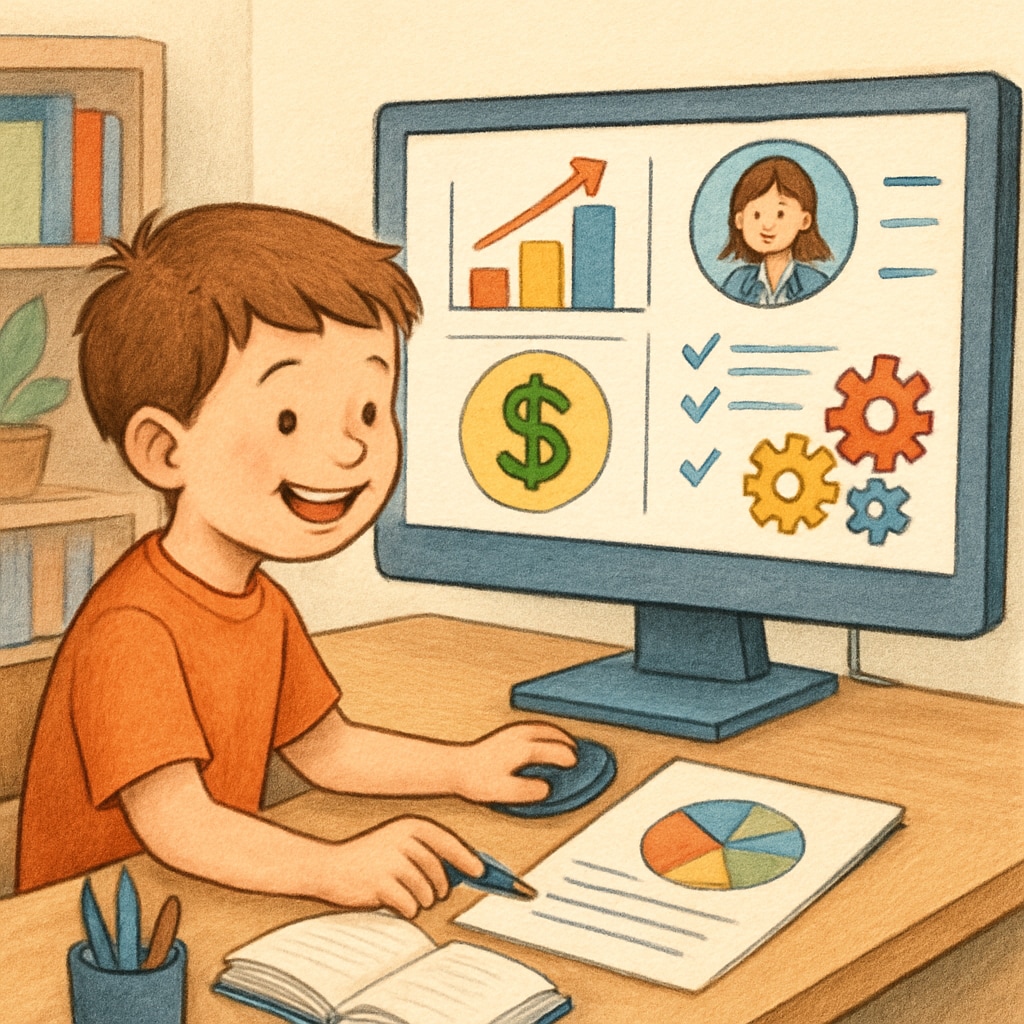In today’s fast-paced world, equipping young minds with essential skills is more critical than ever. A groundbreaking free business course designed for kids aged 8-14 is bridging the gap between traditional education and real-world knowledge. This virtual program focuses on youth education by providing foundational lessons in entrepreneurship basics, investment principles, and marketing strategies. By offering this opportunity free of charge, the program ensures accessibility for all, aiming to nurture the next generation of leaders and innovators.
Why Early Business Education Matters
Children are naturally curious and capable of absorbing complex concepts when taught in an engaging way. Introducing business education at an early age fosters critical thinking, creativity, and problem-solving skills. For example, understanding how investments work or how to pitch a business idea prepares kids for challenges they might face in their personal or professional lives. According to a report by Britannica, entrepreneurship not only boosts financial literacy but also encourages leadership qualities and resilience in young learners.

Moreover, early exposure to entrepreneurial concepts helps demystify the world of business, making it less intimidating. By the time these kids reach high school or college, they are more likely to be confident, innovative, and ready to seize opportunities. As a result, they can turn their passions into profitable ventures even at a young age.
What Makes This Free Program Unique?
This free business education program stands out because of its tailored curriculum, which simplifies complex topics for younger audiences. Below are some of its unique features:
- Interactive Learning: Kids participate in activities like creating business plans and mock investment portfolios.
- Real-World Examples: Lessons incorporate case studies from successful businesses to inspire young minds.
- Flexible Schedule: The virtual format allows kids to learn at their own pace, ensuring no one is left behind.
- Expert Mentors: Industry professionals guide students, making the learning experience both practical and aspirational.
By focusing on these elements, the program ensures that participants not only understand but also apply their knowledge in meaningful ways. This hands-on approach makes learning enjoyable and impactful for children. For more information on how entrepreneurship shapes young minds, visit Entrepreneurship on Wikipedia.

How to Enroll Your Child
Enrolling your child in this transformative program is simple and straightforward. The course is open to all children aged 8-14, regardless of their prior knowledge or background. Here’s how you can get started:
- Visit the official program website and complete the online registration form.
- Provide basic information about your child, including their interests and availability.
- Await confirmation and access login details to the virtual learning platform.
- Join the orientation session to familiarize yourself and your child with the program structure.
Spaces are limited, so early registration is highly recommended. Give your child the gift of knowledge and a head start in life by signing them up today!
The Future Awaits Young Entrepreneurs
This free business education program is more than just a course—it’s an investment in the future of our children. By teaching entrepreneurship basics, financial literacy, and creative problem-solving, the program empowers kids to think beyond conventional boundaries. Whether they dream of starting their own company, managing investments, or leading teams, the skills they gain here will be invaluable in any career path.
As the world continues to evolve, so does the need for young leaders who can adapt and innovate. With the right education and mentorship, your child could be the next big innovator or entrepreneur. Don’t miss this chance to open doors to endless possibilities.
Sign up now and let your child embark on this exciting journey of self-discovery and growth!
Readability guidance: This article features short paragraphs, clear subheadings, and lists to ensure easy comprehension. Transition words like “moreover,” “in addition,” and “as a result” improve flow. Images provide visual context, enhancing engagement.


